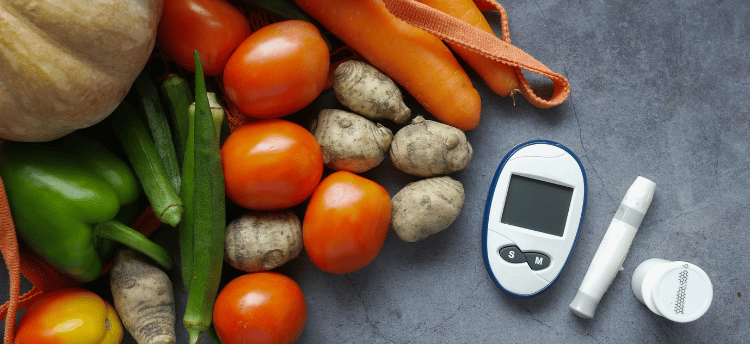The Best Diet for Type 2 Diabetes Remission (What Worked for Me)
Discover how I achieved type 2 diabetes remission through a personalized diet plan. Learn about effective strategies, meal ideas, and lifestyle changes that can help you manage and potentially reverse type 2 diabetes.
5/25/20254 min read


The Best Diet for Type 2 Diabetes Remission (What Worked for Me)
"Did you know that nearly 1 in 10 adults worldwide are living with diabetes?" When I was diagnosed with type 2 diabetes, I felt overwhelmed and uncertain about the future. But through determination and the right dietary choices, I managed to turn my health around. In this post, I'll share my personal journey to remission, the diet that worked for me, and tips that might help you or someone you know.
1. Understanding Type 2 Diabetes and Remission
What is Type 2 Diabetes?
Type 2 diabetes is a chronic condition characterized by insulin resistance, where the body's cells don't respond effectively to insulin, leading to elevated blood sugar levels. Over time, this can result in complications such as neuropathy, retinopathy, and cardiovascular issues.
The Concept of Diabetes Remission
Diabetes remission refers to maintaining blood glucose levels below the diabetic range without the need for glucose-lowering medications for at least three months. Achieving remission can significantly reduce the risk of diabetes-related complications and improve overall health.
Factors Influencing Remission
Several factors can influence the likelihood of achieving remission, including:
Duration of Diabetes: Shorter duration since diagnosis increases the chances of remission.
Weight Loss: Significant weight loss, especially through dietary changes, can improve insulin sensitivity.
Diet and Lifestyle: Adopting a healthy diet and regular physical activity are crucial.
Beta-Cell Function: Preserved pancreatic beta-cell function enhances the possibility of remission.
2. My Diagnosis: The Turning Point
Symptoms I Experienced
Before my diagnosis, I experienced persistent fatigue, increased thirst, frequent urination, and unexplained weight loss. These symptoms are common indicators of type 2 diabetes.
Receiving the Diagnosis
A routine blood test revealed elevated HbA1c levels, confirming type 2 diabetes. The news was overwhelming, but it marked the beginning of my journey toward better health.
Initial Reactions and Decisions
Initially, I felt a mix of fear and confusion. However, I decided to take control by educating myself about the condition and exploring lifestyle changes to manage it effectively.
3. Researching Dietary Options
Exploring Various Diets: Low-Carb, Mediterranean, Plant-Based
I researched various dietary approaches:
Low-Carb Diet: Focuses on reducing carbohydrate intake to lower blood sugar levels.
Mediterranean Diet: Emphasizes whole grains, fruits, vegetables, and healthy fats, beneficial for blood glucose control.
Plant-Based Diet: Centers on consuming plant-derived foods, which can improve insulin sensitivity.
Consulting with Healthcare Professionals
I consulted with a registered dietitian and my healthcare provider to tailor a diet plan suitable for my needs, ensuring it aligned with my health goals.
Setting Realistic Goals
Setting achievable goals, such as gradual weight loss and consistent blood sugar monitoring, helped me stay motivated and track progress effectively.
4. The Diet That Worked for Me
Detailed Breakdown of My Chosen Diet Plan
I adopted a Mediterranean-style diet, rich in:
Whole Grains: Brown rice, quinoa, and whole wheat bread.
Fruits and Vegetables: A variety of colorful produce for essential nutrients.
Healthy Fats: Olive oil, nuts, and seeds.
Lean Proteins: Fish, legumes, and poultry.
Daily Meal Structure and Timing
I structured my meals to include three balanced meals and two healthy snacks daily, maintaining consistent mealtimes to regulate blood sugar levels.
Foods I Included and Avoided
Included:
High-Fiber Foods: To slow glucose absorption.
Low-Glycemic Index Foods: To prevent blood sugar spikes.
Avoided:
Processed Sugars and Refined Carbohydrates: To maintain stable blood glucose levels.
5. Incorporating Exercise and Lifestyle Changes
Importance of Physical Activity
Regular exercise, such as brisk walking and resistance training, improved my insulin sensitivity and aided in weight management.
Stress Management Techniques
Practicing mindfulness, meditation, and deep-breathing exercises helped reduce stress, which can negatively impact blood sugar control.
Monitoring Progress and Staying Motivated
Using a glucose meter to monitor blood sugar levels and keeping a journal of my meals and physical activity kept me accountable and motivated.
6. Challenges and How I Overcame Them
Dealing with Cravings and Setbacks
I managed cravings by finding healthy alternatives and allowing occasional indulgences in moderation, preventing feelings of deprivation.
Social Situations and Dining Out
I learned to make informed choices when dining out, such as selecting grilled options, requesting dressings on the side, and controlling portion sizes.
Adjusting the Plan as Needed
Flexibility was key. I adjusted my diet and exercise routines based on my body's responses and feedback from my healthcare team.
7. Results: Achieving Remission
Medical Tests and Improvements
After several months, my HbA1c levels dropped below 6.5%, indicating remission. My cholesterol and blood pressure levels also improved significantly.
How I Felt Physically and Emotionally
Physically, I had more energy and better overall health. Emotionally, achieving remission boosted my confidence and reinforced my commitment to maintaining a healthy lifestyle.
Feedback from My Healthcare Team
My healthcare providers were supportive and encouraged me to continue my current regimen, emphasizing the importance of ongoing monitoring.
8. Tips for Others on the Same Journey
Personal Advice and Encouragement
Educate Yourself: Understanding your condition empowers you to make informed decisions.
Seek Support: Connect with support groups or professionals for guidance and motivation.
Be Patient: Progress may be gradual; celebrate small victories along the way.
Resources and Tools That Helped Me
Meal Planning Apps: Assisted in tracking food intake and nutritional information.
Fitness Trackers: Monitored physical activity levels and progress.
Educational Websites: Provided reliable information on diabetes management.
When to Seek Professional Guidance
Consult healthcare professionals when:
Experiencing Unusual Symptoms: Such as persistent fatigue or unexplained weight changes.
Making Significant Lifestyle Changes: To ensure they are safe and effective.
Needing Personalized Advice: Tailored to your specific health needs and goals.
Conclusion:
Embarking on the journey to manage and potentially reverse type 2 diabetes is challenging but achievable. Through informed dietary choices, consistent lifestyle changes, and support, I found a path to remission. Remember, everyone's journey is unique, but with determination and the right information, positive change is possible.
